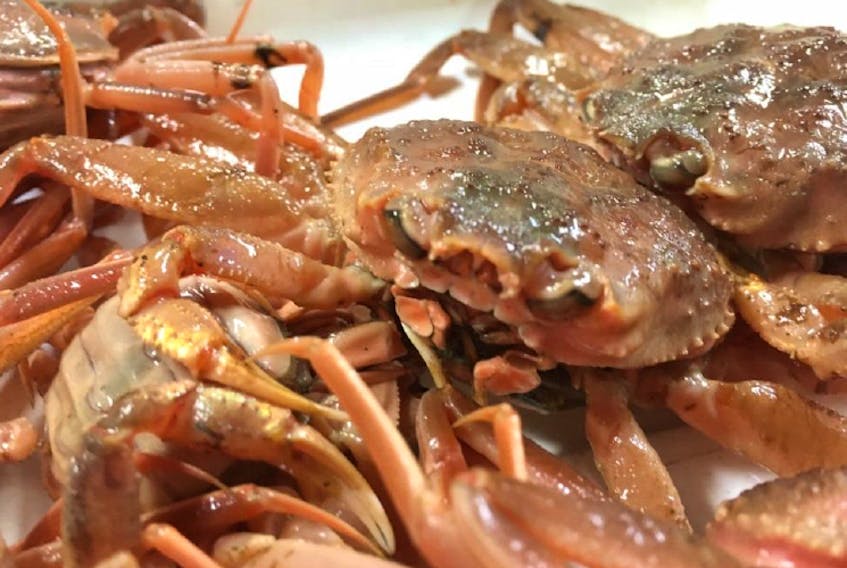It’s been two months since the federal government rolled out a $62.5-million aid package to support seafood processors affected by COVID-19, and a month since the announcement of a $469 million program to aid fish harvesters.
So far no one has seen a cent of funding from either package.
Today, June 16, seafood processing companies are a little closer.
Bernadette Jordan, Minister of Fisheries and Oceans Canada, announced details of how the $62.5 million from the Canadian Seafood Stabilization Fund (CSSF) will be divvied up across Canada, and how to apply.
Of the $62.5 million, Atlantic Canada gets the lions’ share — $38.1 million.
The funding will be administered by the Atlantic Canada Opportunities Agency (ACOA) and is to be used to cover some of the extra costs incurred to operate safely during the COVID-19 pandemic.
ACOA will begin accepting applications on June 22 and funding will be approved on a “first-come, first-served” basis, until the money runs out, according to the press release from DFO.
More details on how to apply are on the ACOA website. https://www.canada.ca/en/atlantic-canada-opportunities.html
Seafood processors have spent hundreds of thousands of dollars to ramp up health and safety during the pandemic, installing Plexiglas™ barriers on the processing lines and providing personal protective equipment to workers.
Allan MacLean of Louisbourg Seafoods in Nova Scotia told SaltWire in an interview in May the company had spent well over $100,000 on personal protective equipment.
“We’re burning through about 1,000 masks a day,” he said.
Martin Sullivan of Ocean Choice International (OCI) in Newfoundland and Labrador told SaltWire he wasn't sure exactly how much money the company had spent because of COVID-19, but it was probably in the hundreds of thousands of dollars.
The company had to take precautions on its four offshore vessels, as well.
“I don’t know what the final numbers are yet regarding COVID cost but I wouldn’t be surprised if it went over $1 million,” he said. “It’s a big number but we just have to deal with it.”
Related
Seafood processors in Quebec and Western Canada will also get a share of CSSF.
About $9 million has been allotted for the Quebec region, to be administered by The Canada Economic Development program.
Western Canada will get just over $9 million, administered by the Western Economic Diversification Canada Agency.
The Department of Fisheries and Oceans (DFO) will retain $6.2 million of the CSSF.
The minister said this money will be use to “respond to emergency industry pressures related to COVID-19 including, for example, additional funding in regions where there is a high demand for support.”
Minister Jordan today also noted another measure to help the seafood processing sector.

The DFO has reopened the Canadian Fish and Seafood Opportunites (CFSOF) program to help the industry access new markets.
This isn’t a new package of funding.
The CFSOF was actually announced in 2017 as a seven-year, $42 million program to run until March 31, 2024.
The aim of that program was to develop and strengthen Canada's seafood export market.
“The idea behind it was to hit international markets, to brand Canadian seafood products for export,” Jordan told SaltWire in an interview today. “It was a time when we were signing a lot of trade deals and we wanted to make sure the Canadian seafood sector was well-represented.”
Because of COVID-19, the focus on marketing is shifting.
Jordan said the current aim of the CFSOF is to help processors build domestic markets and get more of their product to Canadian dinner tables.
“We want to make sure Canadians recognize what great value there is in purchasing Canadian seafood.”
The export value of Canadian seafood products was at just over $7 billion in 2019.
According to Jordan, although the CFSOF program is nearly three years old, there’s still a lot of money left in the fund.
“I believe there’s only $4.8 million that has been spent.
“And we’ve changed the way the fund is going to be set up so that it’s a continual intake, as opposed to opening it up for just a certain amount of time.
She says that will give companies more flexibility.
“Maybe they have a good idea but they’re not ready to apply just yet, but they will be able to apply in six months’ time.”
This CFSOF program is funded 70 percent by Ottawa and 30 percent by the provinces.
Asked whether she had any concerns that the provinces may have difficulty in contributing their 30 percent share given the other fiscal challenges of COVID-19, Jordan replied, “Every week, pretty much since the start of the pandemic, I’ve had weekly meetings with all of the fisheries ministers from the Eastern provinces (and) B.C.) and they are all very much in agreement that we need to do more in terms of marketing domestically.”
As for the fish harvester, however, there are still no details on how the $469 million will be delivered to help those who lost income due to COVID-19.
Jordan could not say when the details of that program will be announced.
“The challenge is this is a brand new program, it’s not just a matter of writing a cheque. So we are working right now to work out the details, to make sure the money is there for them.
“But harvesters can rest assured that it is coming, we are committed to it and we are dedicated to working to get it out as quickly as we can.”
Plant workers around the region are also worried about their financial situation this season.
Asked why plant workers were not included in the $469 fish aid program, Jordan said, “Initially we were looking at harvesters and share crews because they did not qualify for any of the other support programs we had in place.”
She added plant workers are part of the bigger piece of the puzzle.
“Seasonal workers across the country are impacted by COVID-19. That includes our agriculture sector and our tourism sector.”
The issue of how to help all those seasonal workers falls to the Department of Employment, Workforce Development and Disability Inclusion, led by Minister Carla Qualtrough.
“I’ve had many conversations with Minister Qualtrough, who is in charge of the EI program, on how we are going to address this," said Jordan.
“I know she’s working on getting something out the door very quickly; she is trying to get there and the Prime Minister has said no one will be left behind.”









